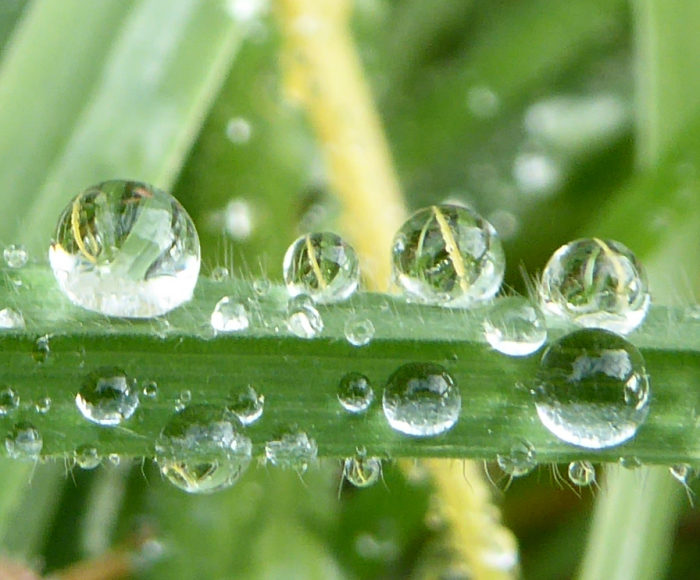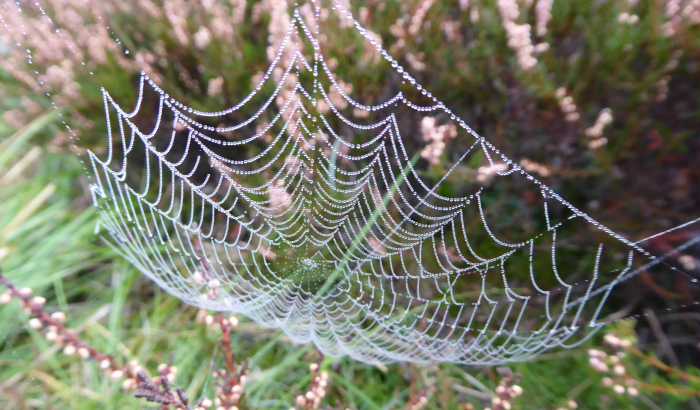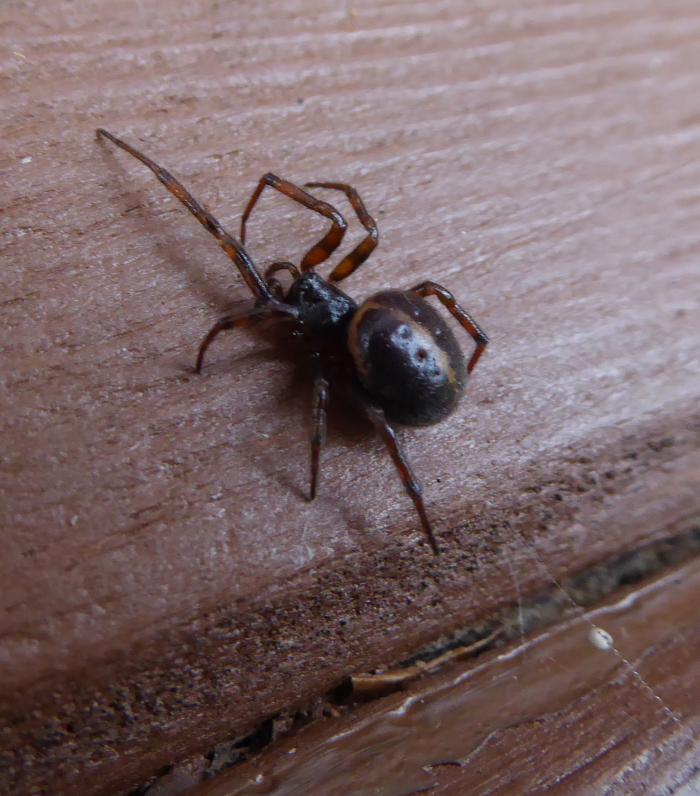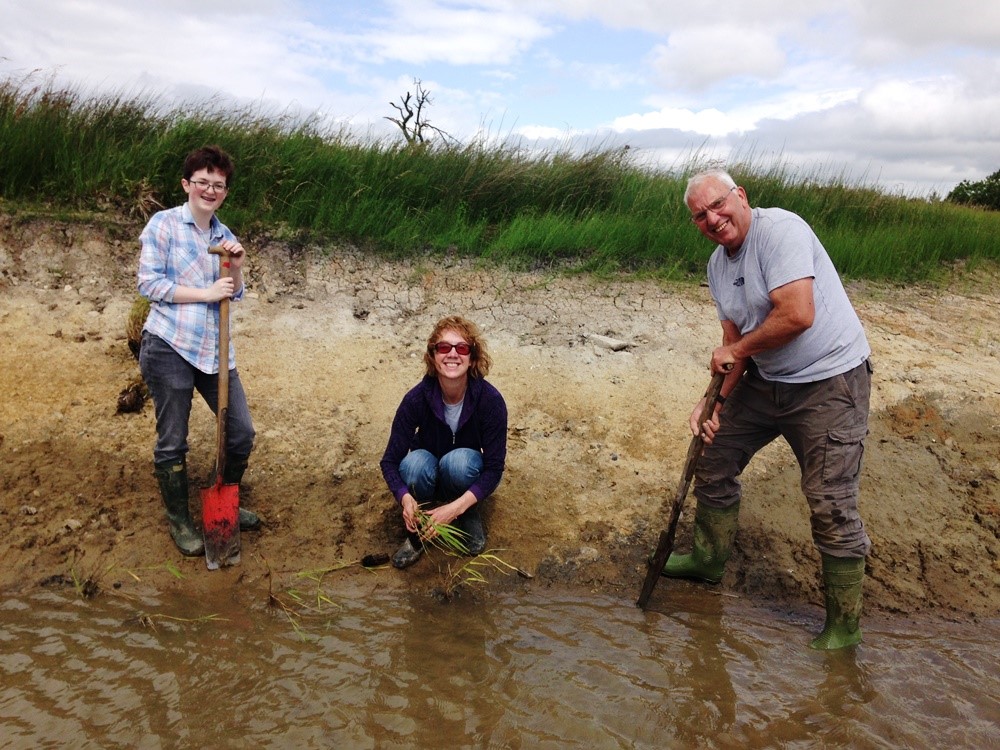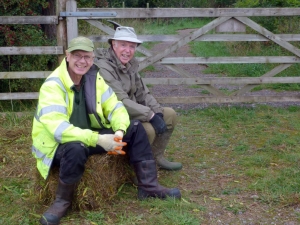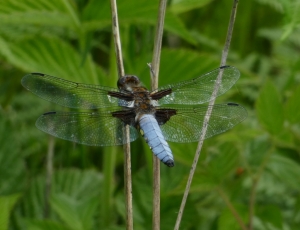Blog Archive (24) Posts Made in November 2015
Stitching and Knitting
Sunday, November 29th 2015
As soon as the weekend weather appears on the 10 day forecast so begins the wait to see what mixture is in store for us. For what seems many weekends we have had rain or wind or both and this weekend was no different. Next does not look too good either! Certainly just a little too wet and a little too windy to put up mist nets.
Risedale Beck reflected the amount of rain that has fallen recently.
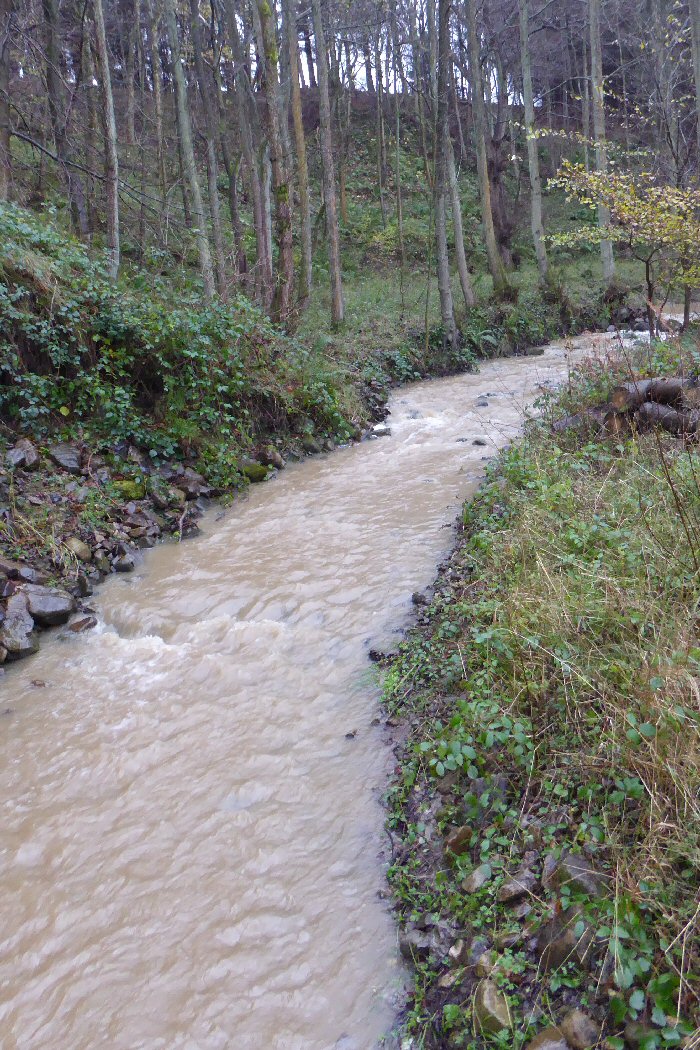
So the bird ringers arrived for a spot of stitching and knitting, repairing some of the mist nets. The nets are spread out across the tables to find the holes and then the large piece of polystyrene is placed under the holes so they can be pinned and stitched more easily.
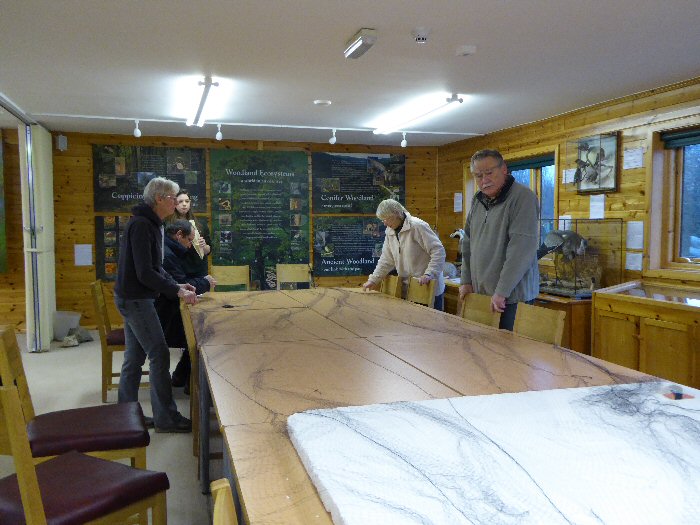
With many hands a great deal of repairing was completed.
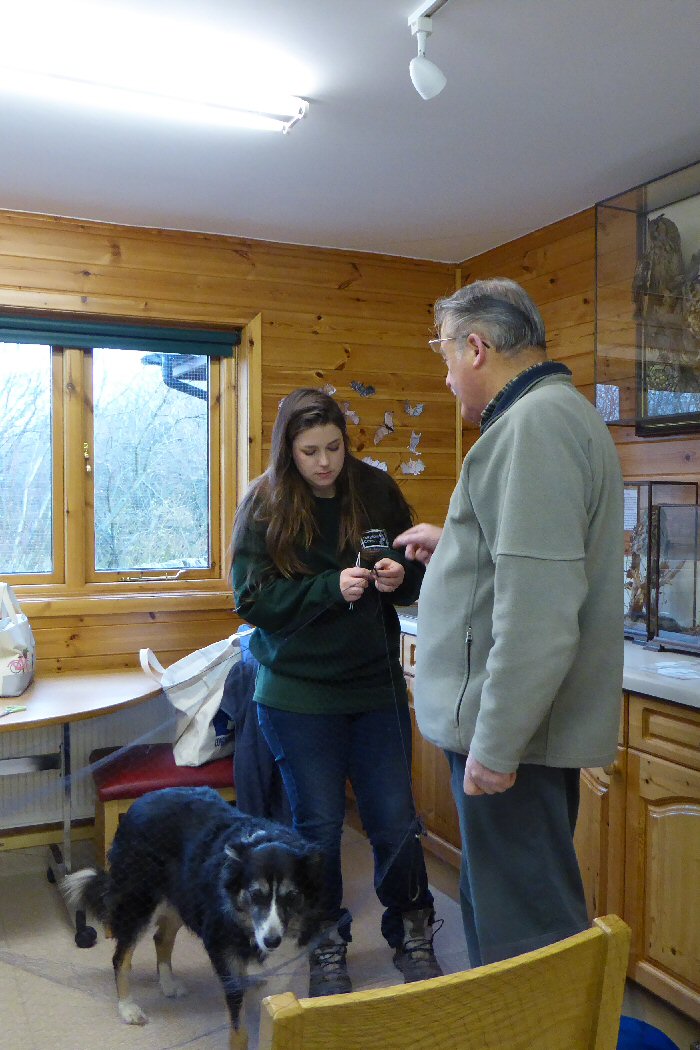
Ringing day, even if it is stitching and pouring with rain means the arrival of sausage rolls!
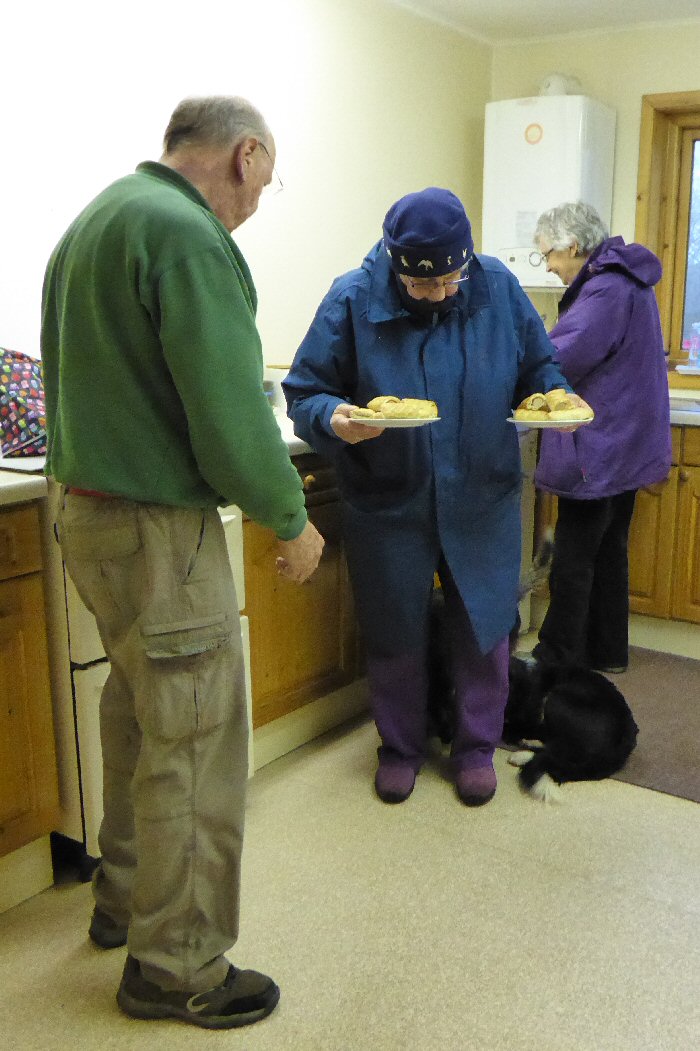
Out on the reserve there was fun to be had at the dams, although it did not take long for them to overflow and when the dams were removed there was even more water heading downstream!
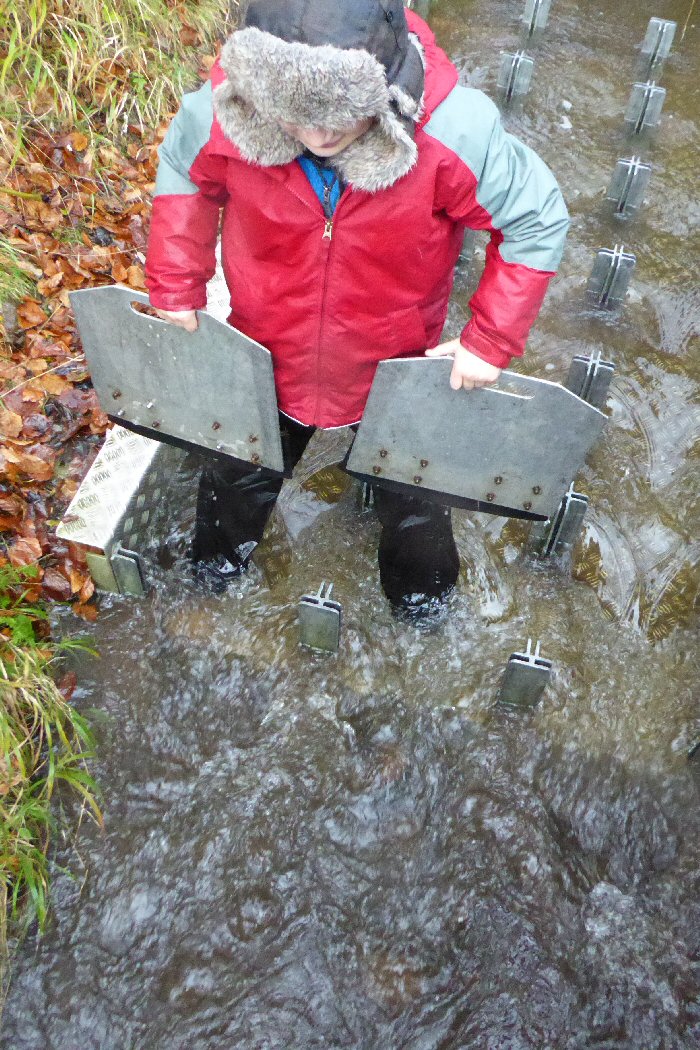
Thank you to everybody who helped out today. A good day to be inside!
PS - Whilst Brian was out checking the mink raft down at the Gabbions he realised he was not alone! When he looked around carefully, he saw an Otter playing in the swollen Beck. This is the second sighting in recent weeks, the other being on the lake.
Looking back - 2009
Saturday, November 28th 2015
Looking back over the years it is apparent that some things at Foxglove do not change, whilst others do. In spring the over-wintering Peacock butterflies emerge to sunbathe and then feed.
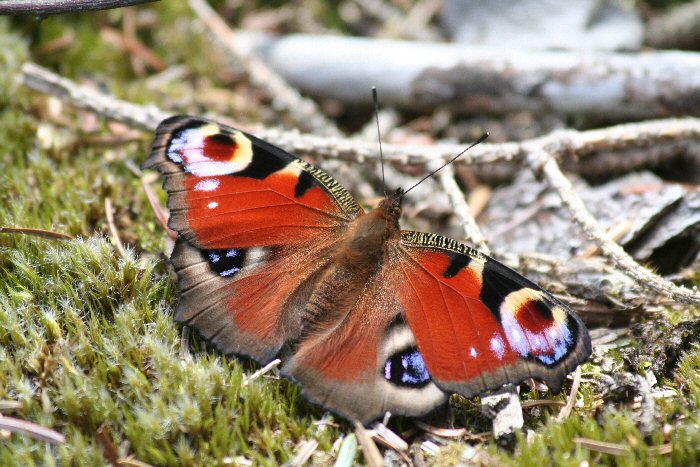
In late spring Large Red Damselflies take flight and even though there is plenty of vegetation around, often prefer man-made structures upon which to rest.

Come late autumn the last flowers are hanging on, providing food for insects still on the wing. Quite often they are decorated with water droplets.

A photograph of the middle moor with all four Highlanders, makes you realise how much the moor has changed. They were on the moor for several years and did an excellent job improving the land. Their antics are well remembered.

Possibly the lake and the area around it have seen most work.
.jpg)
This photo was taken in August this year. Although not from exactly the same spot you can easily see the many changes that have taken place.

Get a Slice of the Good Life
Friday, November 27th 2015
Ok, we’re not talking Felicity Kendall and growing your own vegetables, but we do get many comments about how lucky we are to have a job that allows us to spend so much time outdoors, and we appreciate it is something that many people who work in offices or factories would relish. Well, if you are free on Saturday 5th December we have an opportunity for you to join us on our second Winter Worky Day of the season, when we go out onto the reserve and do some practical habitat management work, it’s a real a chance for some fresh air, exercise and general bonhomie. We start at 10am and a hot lunch and refreshments provided. Wear outdoor clothes and footwear.
If you are feeling the urge to be creative, we still have some spaces left on our Christmas Willow Wreath making workshop on Friday 11th December. Starting at 10am until lunchtime approx, morning coffee will be provided.
You can find details of these and other events on our website. If you are interested in attending any of these events or have any questions regarding them, please get in touch, we will be happy to hear from you.
A Mixed Day
Thursday, November 26th 2015
That’s not a reference to the weather today which was about a good a day as you could wish for in autumn, blue skies and sunshine.
The first task for our Thursday volunteers was to do some tool maintenance, our bowsaws and loppers get quite a lot of use, you could almost say they get quite a hammering! and have especially so in the last few weeks, so we sorted through them, separating those in good working order from the ones requiring either a bit of TLC or new parts. After that we headed down past the lake hide to an area of brash collated from the streamside clearance we had completed a few weeks ago and had a bonfire.
Thanks to some hard and efficient work today we completed several tasks, thank you one and all.
November Flower Walk
Wednesday, November 25th 2015
There were blue skies throughout the day at Foxglove and visitors enjoyed their walks through the reserve. Some were very lucky to spot the Kingfisher on the lake and the 4 Moorhens feeding near the duck feeding platform. Something is working at last!
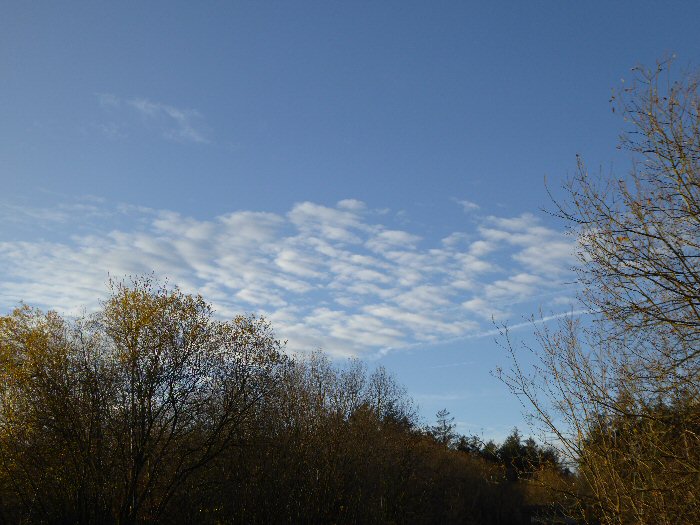
When we set off on the flower walk we did not expect to see very much as the vegetation has really suffered with the wind, rain and first 'proper' frosts of the winter. Amazingly we found eleven flowers actually in flower. Two weeks ago Saw-wort was in full bloom. Today there was a single purple flower but the seed heads were golden.

Two colours you would not always put together are shown in the Spindle fruit. The orange seeds were still clinging to the pink pods. Unfortunately they do not pass the flower test!
.jpg)
Gorse already has tiny flower buds. There are still many pods left on the bushes. Inside some of them are Gorse Seed Weevils, who feed on the seeds. When looking for more information about these weevils on the Internet, it was found that they are used as biological control in Australia where Gorse is classified as a weed.
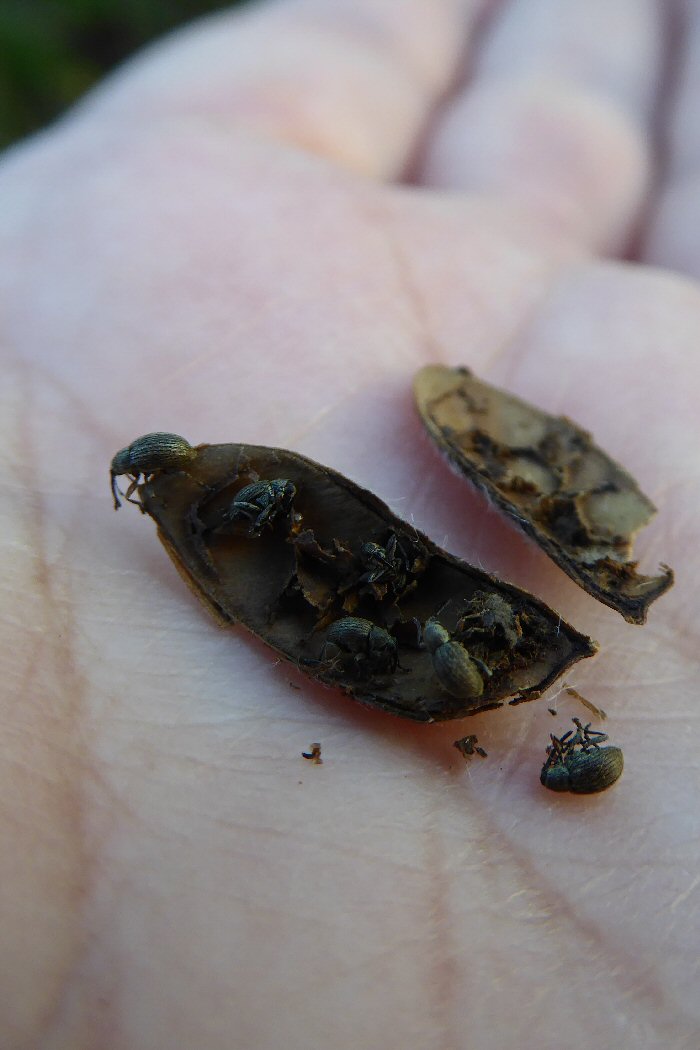
A Prickly Problem
Tuesday, November 24th 2015
Today we were blessed with blue skies and sunshine, with just the odd shower, a great day for our volunteers to head out onto the small heath. Previously a large section on the woodland side of the heath had been cleared of encroaching vegetation, so today we mainly concentrated our efforts on the lake side of the drive.
Some large patches of Gorse, Silver Birch, Hawthorn and Bramble were either cut back or pulled up.
Later on in the morning we were joined by the Dales School, who helped cut up the brash and take it to the bonfire.
A big thank you to everyone who helped out today, it’s a prickly and difficult job, but worthwhile, lowland heath is a rare and threatened habitat both in the UK and internationally.
The Wind in the Willows
Monday, November 23rd 2015
…..and other trees. After the high winds over the weekend and today, several trees like this Alder had come down and/or were hung up at dangerous angles.
Checking that the trees both adjacent to and off the paths are in a safe condition for our visitors is an important aspect of the management here. We found several trees today that were unsafe and had to be cut down…
and another important aspect is loading the bird ringing data which is almost a daily activity all year long. Out of interest 4330 new birds have been loaded so far this year, well down on previous years (but there are many more pages to go), and 1701 retraps. Tonight two Guillemot retraps were loaded from Cape Wrath in July this year and both were 20 years old having been ringed at the very same site in the mid 90s! They were both ringed as chicks so we know exactly how old they are and that they hatched on the stacks immediately to the east of Faraid Head.
Species on our Wetland and News from the South
Sunday, November 22nd 2015
Many of the species listed in Martin Hammond's report are invertebrates and photographs of these have not been taken by volunteers. A great number of these tiny creatures require specialists to identify them correctly. Some, more obvious ones, we have photographed and identified. Large Red Damselflies were recorded. This photograph was not taken on the wetland, but near it.
Another damselfly flying in July is the colourful Emerald Damselfly.
Plants are much easier to photograph as they do not depend too much on the weather and do stay still! Common Spotted Orchids have done really well over the last three years and we have seen their flower spikes in many places on the reserve, including the wetland.
Meadowsweet provides food for many insects.
Cuckoo flower, also know as Ladies Smock or Milkmaids, shows its delicate pink flowers in spring. It is the food plant of the Orange Tip Butterfly caterpillar.
White fluffy heads of Common Cotton-grass can be seen in some of the ponds. This plant is noted as Vulnerable on the BSBI England Red List.
Usually we have 'News from the North' when the bird ringing team are at Cape Wrath. Now we have 'News from the South'. Isn't technology amazing that Stacey can contact us all the way from Signy Research Station, Factory Cove, Borge Bay, Signy Island.
'Not available for ringing unfortunately, but its nice to hear what is going on. After a long couple of weeks on planes and ships, and the excitement of opening up the research station, today I finally got across to my penguin colonies to get started. Today's job involved laying out numbered bricks through my colonies, each one marking out a penguin nest, that I will follow through the breeding season. It is a gorgeous day of blue skies, pretty clouds, lots of sea ice and penguins.'

Our Fantastic Wetland
Saturday, November 21st 2015
During the winter of 2008/9 a series of inter-connected ponds were developed at the far end of the moor. They are fed by water from a spring out on the moor, beyond our boundary. There were some ponds already present and these were not connected to the new ponds.
The area looked bare when initially completed. These photographs was taken in January 2009.
By April of 2009 the frost had gone! The wetland was just showing some growth of plants.
Before the ponds were constructed an ecological survey of the existing ponds was carried out by Martin Hammond. All the data from this was added to our species list and several new species were found, including Mud Snail.
Our ponds have been designated as a Flagship Pond by the Freshwater Habitats Trust. You will have read on the blog that volunteers have had training on surveying Mud Snails and Pillwort. Also, Martin Hammond returned to do another detailed survey of the ponds in July this year.
We have just received his report. There is a great deal of information in the report and we are still reading it and evaluating the information it contains. However some things really do stand out.
Evidence of Water Vole burrows, latrines and feeding sites was observed in nine ponds.
Plant records totalled 69 including Marsh Cinquefoil which has Near Threatened status in England. It was found in 7 ponds.
The wetland has changed a great deal in six years. They have developed tremendously, with a great deal of work from reserve managers and volunteers and are an absolutely fantastic habitat.
Work Experience at Foxglove
Friday, November 20th 2015
On Thursdays and Fridays for the last few months we have been joined by Jonathan, who is completing his work experience with us for his Countryside Management degree at Askham Bryan. We have been putting him through his paces, completing lots of practical management tasks around the reserve. This morning he helped fill all the feeders.
Then this afternoon we continued to burn the brash that had accumulated from the woodland work undertaken over the last few weeks.
We then planted a few Oak saplings that had been kindly donated to us by David, a regular visitor and volunteer.
Jonathan will be with us for the rest of his academic year however, we would like to take this opportunity to thank him for all his hard work, as he has been a great help over the last few months and is a really good addition to the team.
A Good Day for a Fire
Thursday, November 19th 2015
Today we took opportunity of the fine and dry weather to have a good old bonfire and burn away a a lot of the brash we had collected over the past few weeks from clearing the overhanging trees on the banks of the stream, running from the lake all the way down to the bullet catcher.
Whilst we were outside, the Visitor Centre was hosting a team meeting for Natural England staff, who also had a tour of the reserve in the afternoon.
We were a small group today but we managed to clear all the brash down at the bullet catcher. Thank you everyone for all your hard work in getting this task done.
Help For Heroes
Wednesday, November 18th 2015
Today we hosted a group from Help for Heroes on the Pathfinder programme. We had planned to get out and complete some habitat management tasks around the reserve; however with driving rain and howling winds we decided that some indoor activities might be more appropriate. So we discussed the wonderful life of our bees and visited both of our hides. It was nice to meet them all and hope that we will welcome them back in the future.
Whilst we were busy with the Pathfinders a group of our regular volunteers organised the catalogue of flora and fauna photographs we have at Foxglove and inputted sighting records into the species database.
We would like to thank you all for completing these vital tasks.
Three Men and his Dog….
Tuesday, November 17th 2015
Out on the middle moor our intrepid band of volunteers went as the rhyme finishes off…… ‘to mow a meadow’, or to be more accurate, rake up what had been mowed previously.
The removal of the cuttings is essential in helping to reduce the nutrients in the ground which in combination with other methods will allow a more species diverse sward to develop. Other methods of management have included grazing and the planting plugs and/or spreading the seed of Yellow Rattle, this meadow flower competes with the more aggressive grasses by acting parasitcally on their root structure, siphoning off some of the nutrients for themselves and thereby reducing the vigour of the host plant.
.jpg)
Whilst out in the meadow someone spotted this fantastic fungus, it’s a Scarlet Waxcap, a common field species.
Later on in the morning we were assisted by The Dales School. Thank you to everyone who came out and braved the elements today, as always your help is much appreciated.
Ferns
Sunday, November 15th 2015
In spring, the 'Shepherd's Crook' also known as 'Crozier' (after it's resemblance to a Bishops staff) shape of ferns is easily recognised.
As spring progresses into summer so the fronds unfurl and the cone shape is revealed.
Autumn sees the fronds produce the spore cases on the back of the leaves. These are the typical ferns we see around Foxglove.
Adder's-Tongue fern, which has grown really well this year, is certainly not typical. This fern is an indicator of ancient meadows. Depending on which information you read it is an annual and or survives winter with slender underground rhizomes

Close up you can see the spore bearing part of the fern. This is where its name originates, presumably looking like an Adder's tongue?

Pillwort is also a fern although again, not looking anything like one. It grows in water and prefers areas that can dry up a little and be trampled by stock. It gets its name from the 'pills' found along its rhizomes and these can be seen below.
This rare fern has been found on the wetland and it was suggested that we could grow some in a fish tank so everyone could see it. Before setting this up some trials are being carried out, in plastic containers, on a windowsill. Although it looks nothing like a fern you can just see an unfurling 'frond' in the centre of the photograph.
Pillwort is a true fern and reproduces by spores, which are found in 'sporocarps', (the pills) hard capsules that may remain viable for many years, but which open when swollen with water to release megaspores, fertilized by the microspores, which are also released. Three 'pills' were placed in some clay and within a week they had burst to release these megaspores, the tiny white dots in the middle of the brown clay!
When growing ferns from spores it may take up to two years before they develop. How long these will take we do not know. Nor do we know if the Pillwort will survive indoors over winter. An exciting project that hopefully will result with a fish tank of Pillwort in the Activity Room!
Thank You
Saturday, November 14th 2015
As has been mentioned many times before on the blog, Foxglove's volunteers are brilliant, turning their hands to many varied tasks. Recently they have been involved in habitat work, leading guided walks, helping with school groups, identifying moths and entering them into the Species Programme and organising and helping at the coffee morning.
Glennis, one of Foxglove's volunteers, organised a presentation by John Webster titled Light and Inspiration. Last night, over 100 friends and visitors were enthralled. After the presentation everyone enjoyed an excellent meal. A huge thank you to John and Glennis, not forgetting other volunteers who helped and the staff who prepared and served the meal.
The wet and windy weather is hastening Foxglove from autumn to winter. Gone are most of the flowers and many of the seeds have been dispersed. Some trees have lost all their leaves. These Ash trees near the middle moor gate, now show their bare branches against the sky.
One late flowering sedge, Galingale, can be seen growing around one of the ponds. It is a sedge and definitely has edges. The stem is triangular, although the photograph does not show it very well.
Galingale has a distinctive rusty red flower head. There is not much information about this plant other than if it is grown in an ornamental pond, it can take over unlesss planted in a container. It spreads by underground aromatic rhizomes.
Team Cappuccino Rides Again
Thursday, November 12th 2015
This morning Foxglove hosted a Coffee Morning in Richmond Town Hall, run by some of our volunteers affectionately known as, 'Team Cappuccino’.
Around about 100 people came and enjoyed tea, coffee, biscuits and freshly baked cakes.
There was a tombola, raffle, bric a brac stall, Foxglove shop with bird seed, books and cards and of course a cake stall.
A fabulous £333.00 was raised for Foxglove this morning, there’s a lot of organising and background work goes in to running a coffee morning so a big thank you to Team Cappuccino and all who helped out.
Fungi Foray
Wednesday, November 11th 2015
This morning Foxglove hosted a Fungi walk led by one of our very knowledgeable volunteers. Going around the woodland trail we were introduced to some common and not so common species and given tips on identification. Here are just some of the 30 species we saw today.
This is Birch Polypore, a common species peculiar to Birch, it's other name is Razorstrop Fungus, as it's dense composition made it useful for sharpening blades.
The intricate patterns of the Conifer Maze Gill.
This is a new species for the Reserve! Jelly Tongue or sometimes known as Jelly Tooth.
Windy Days
Tuesday, November 10th 2015
With heavy winds for the last few days we started the day by checking the reserve to see if there had been any damage. The volunteers split into groups and went off to check all the paths. We found and cleared one uprooted tree, a number of fallen branches and unfortunately one of our finger post signs had snapped off.
We then got stuck into the job of removing Silver Birch from the area around the car park. Silver Birch is prolific here at Foxglove and grows in really dense pockets. The stems grow higher than the surrounding vegetation very quickly and begin to shade out the other trees. In the dense thickets the trees stop any light getting to the ground layer reducing the ground flora.
We have to undertake a large amount of work each year to stop the Silver Birch essentially taking over many of our woodland habitats. The volunteers pull the saplings out if possible to remove the roots and if not cut them off at the base.
The children from the Dales School came out at lunch time to help clear up some of the trees that had been removed by the volunteers in the morning.
The brash was dragged to the fire site, processed into manageable size pieces and then burnt off.
The volunteers worked really hard today and cleared an amazing amount. Thank you very much for all your hard work and dedication.
If you are free on Thursday morning don’t forget it is the Foxglove coffee morning at Richmond Town Hall, please come and join Team Cappuccino for a cup of tea or coffee, a biscuit and a friendly chat. There will be the usual array of stalls, a raffle and delicious cakes. Everyone is welcome so pop in and say hello.
Water
Sunday, November 8th 2015
Risedale Beck is often a small gently bubbling stream with clear water.
After rain it is another matter. Risedale Beck's catchment area is out on the fells and when it rains all the water floods into the beck. Various measures have been taken to prevent erosion on some of the bends. Yesterday the beck was a raging torrent and the stones built up on one corner were holding well.
Further downstream the willow hedge, built by the volunteers, was also withstanding the flood. This has grown well and you can still see the green leaves of the willow.
Out on the middle moor the ditch running parallel to the fence was doing a good job of channelling water away from the moor.
Then, of course there is the more delicate side of heavy rain, water droplets. Seed heads of grasses had caught many drops and shone like diamonds in the sunshine.
Water droplets on blades of grass almost defy gravity. If you look closely you can see that some of the water droplets act as a magnifying glass.
And of course the spider webs become visible.
Winter Worky Days Begin
Saturday, November 7th 2015
The day started with torrential rain and the forecast was for more of the same for the rest of the day. Our fabulous volunteers were not deterred and twenty eight came to help out on the first winter worky day of the year.
We set to work removing Silver Birch saplings from a naturally regenerated conifer block.
Despite the rain a fire was soon going, warming the workers and burning off the piles of brash.
Everyone was in high spirits and seemed certain that the clouds would blow over producing a sunny afternoon. We stopped for the usual curry lunch and some fabulous cakes that the volunteers had prepared.
Just as the food was being served the clouds disappeared and we were treated to a clear blue sky for the afternoon's activities.
As usual everyone worked very hard today and we cleared a substantial area. Thank you to everyone who came and braved the elements to help out, as always it really is appreciated.
Don’t forget that the next Winter Worky Day is on the 5th of December, we hope to see you all there.
Clearance Completed
Thursday, November 5th 2015
With dense fog continuing to hang in the air today the volunteers continued the task of clearing the stream that flows from the lake. Any branches or vegetation that were overhanging the stream have been removed over the last few weeks.

Everyone worked really well at this now familiar task and we managed to clear the last few hundred metres today.

It was a pretty dismal day but the volunteers continued to work in high spirits and completed the task to their usual high standards. Thank you very much for all your hard work.
Mowing in the Mist
Wednesday, November 4th 2015
Today we have been continuing with tasks started previously, this morning we finished off burning the brash left over from yesterday. In the afternoon we continued to mow the meadow on the middle moor.
We will rake the cuttings off on another day as we want to encourage the wild flowers to grow.
While we were out, our local farmer came to collect his sheep that had been grazing an adjacent meadows of ours. They help to keep the coarse grasses in check so the wildflowers have a better chance.
We left these fine specimens of Fly Agaric to survive another day!
Fog & Fire
Tuesday, November 3rd 2015
Another foggy day descended upon us, but through the gloom our ever enthusiastic volunteers beavered away, cutting down trees and saplings adjacent to the drive from the visitor centre down to the car parking area.
.jpg)
By lunch time not only had the fog lifted a bit but the drive was looking a lot lighter with the Willows neatly pollarded. No baked potatoes today but we had a roaring fire to dispose of the brash we created.

Thank you everyone for all your hard work today.
Spider
Sunday, November 1st 2015
When out and about rooting or just walking we are always looking for something different, something that is not quite as it should be, something that should not be there. On closer inspection this 'something different, not quite right' ends up as a coloured leaf, a dropping, a piece of mud or a hole in a leaf. However this does not stop us diving under branches, getting down on hands and knees or using binoculars. Taking photographs often helps with ID of 'things'! Sometimes we are lucky and it is something special.
In the back garden there was a small spider. On first seeing it Black Widow sprang to mind, then no it can't be! Identification books and web sites were consulted and Tim arrived with the answer Steatoda bipunctata.
Brian and Chris tried to get a photograph of its underside as it has an infinity sign mark. Spider was not co-operative. This spider belongs to the group known as false widows, so initial reaction was not too far out. They can give a nasty nip - not sure if Brian and Chris knew that.
Further reading revealed that these spiders like rabbbit hutches and are called Rabbit-hutch spiders. Now you may well be asking yourself where is the rabbit hutch in the back garden - we do not have one but perhaps this box, protecting some pipe work, is similar enough to keep our spider happy. (If you look closely the tiny black mark on the slope is the spider.)
After all this excitment it is a new species for our ever growing list of plants and animals found at Foxglove.

.JPG)
.JPG)





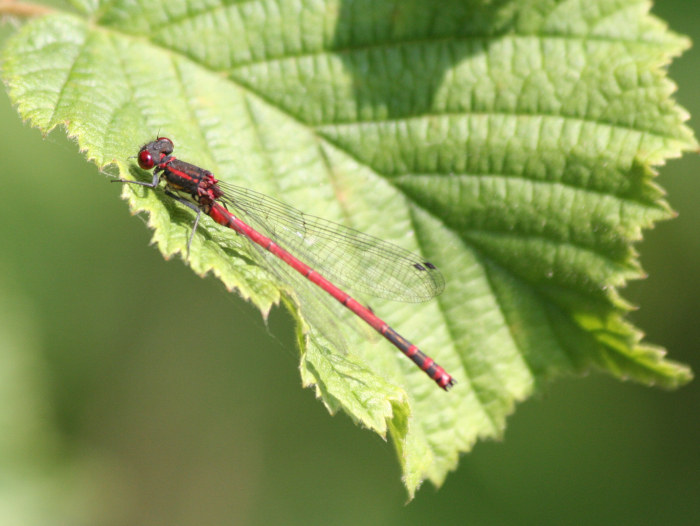
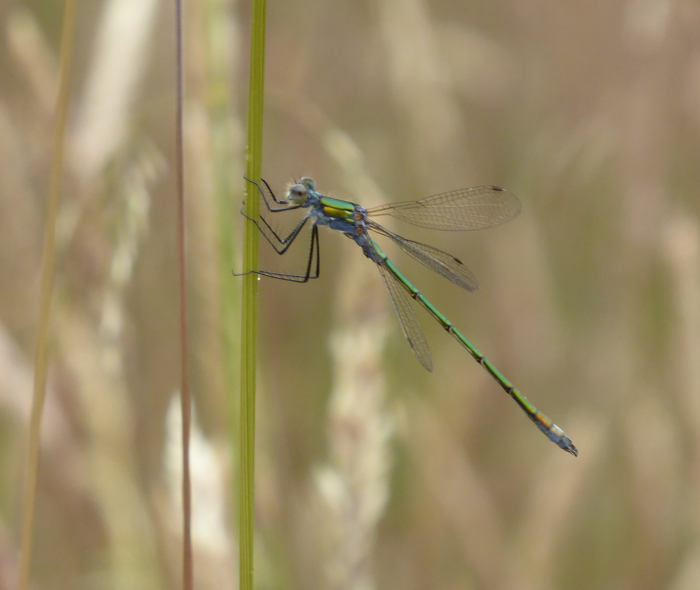
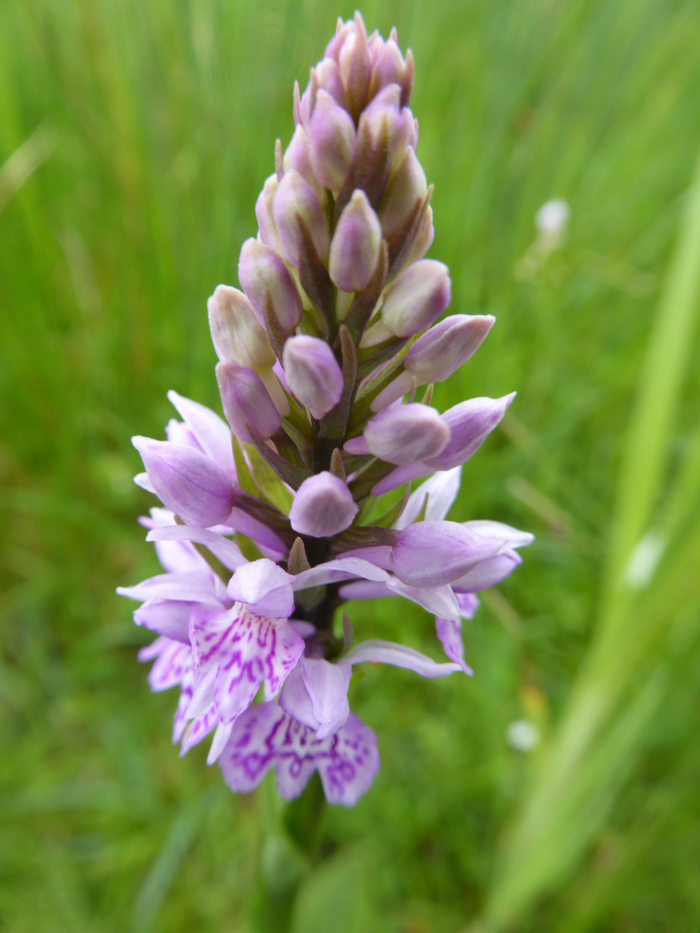
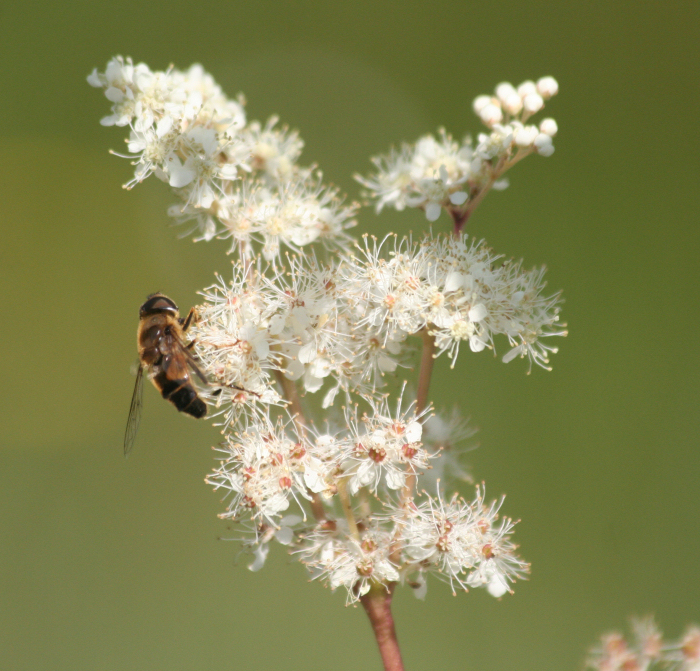
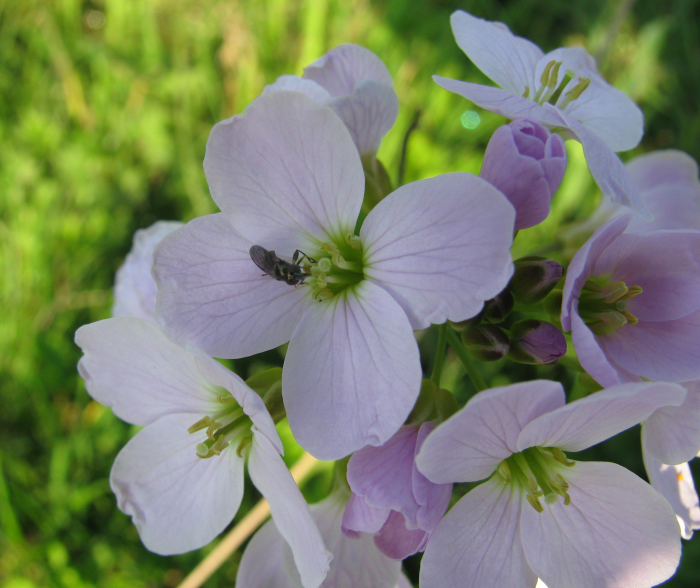
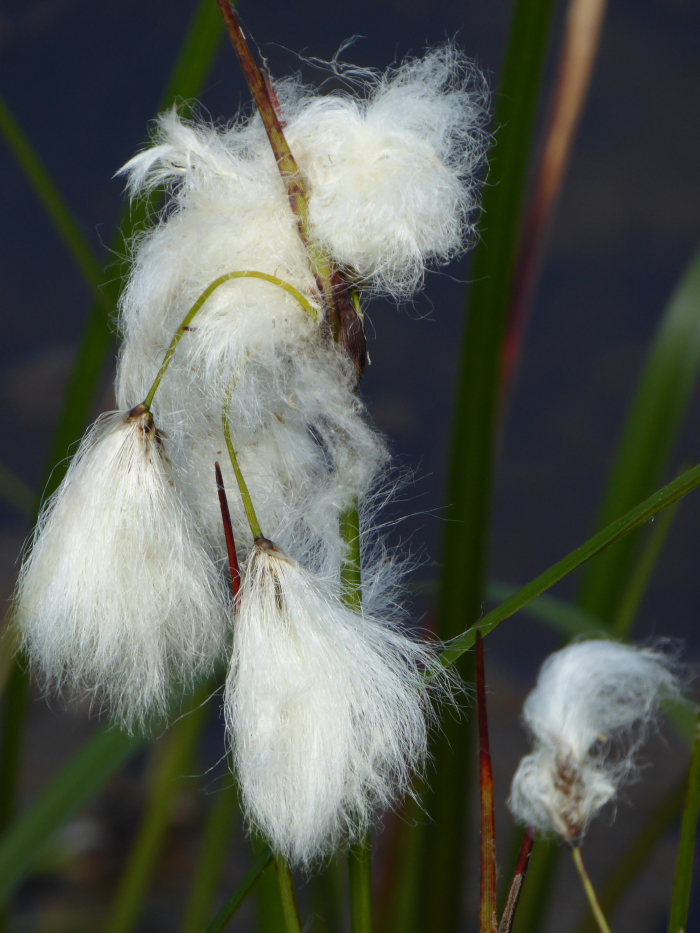


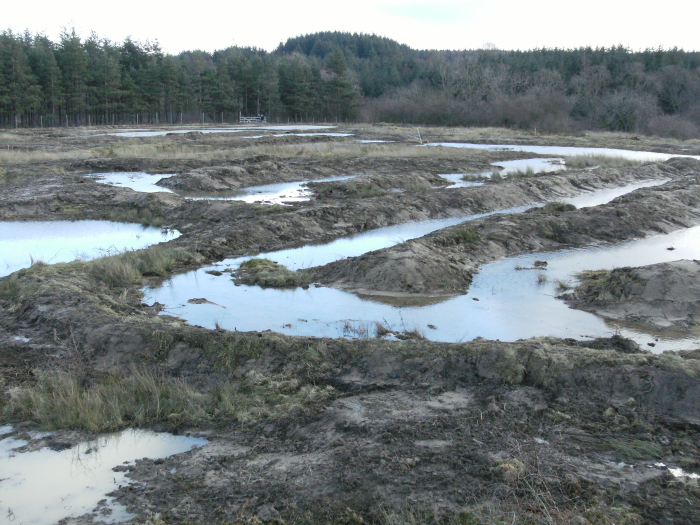
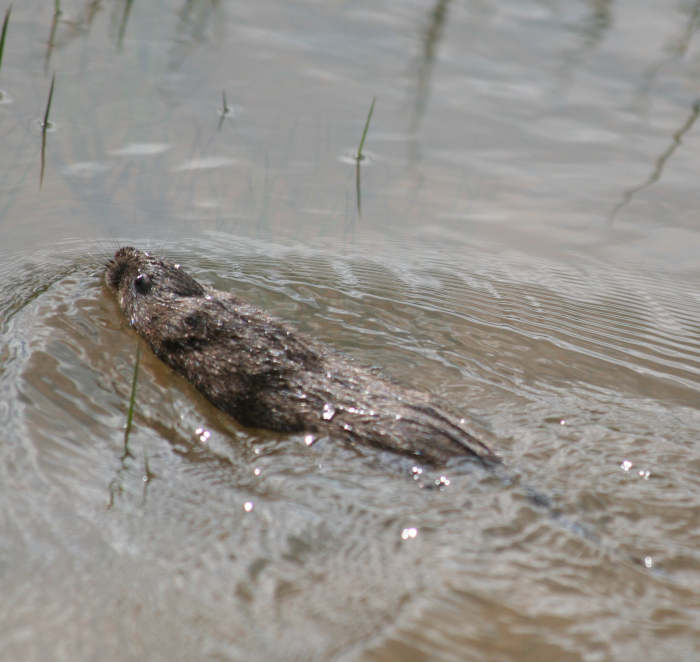
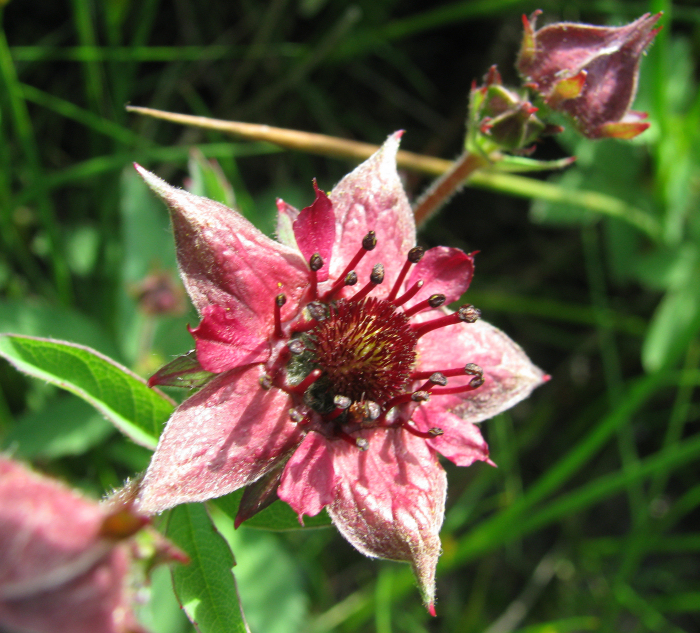
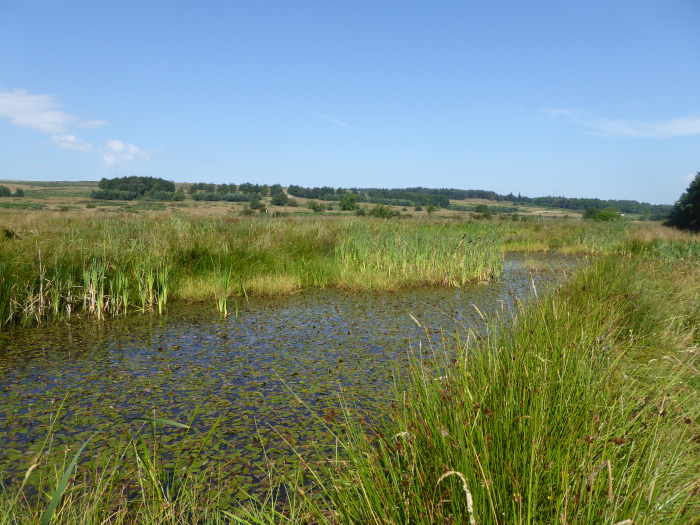
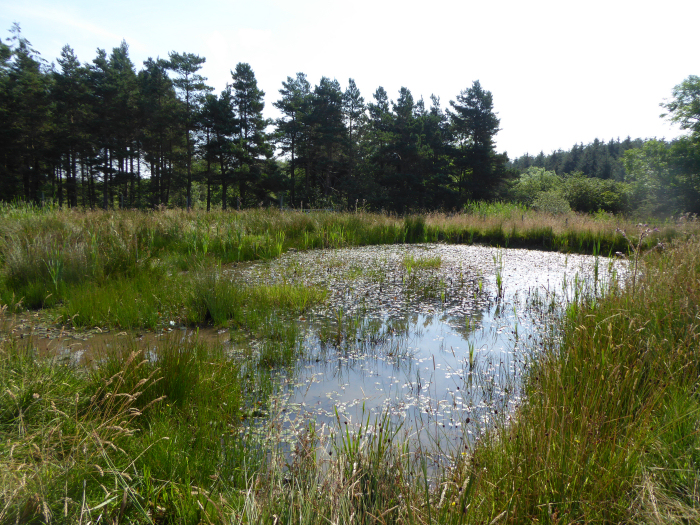













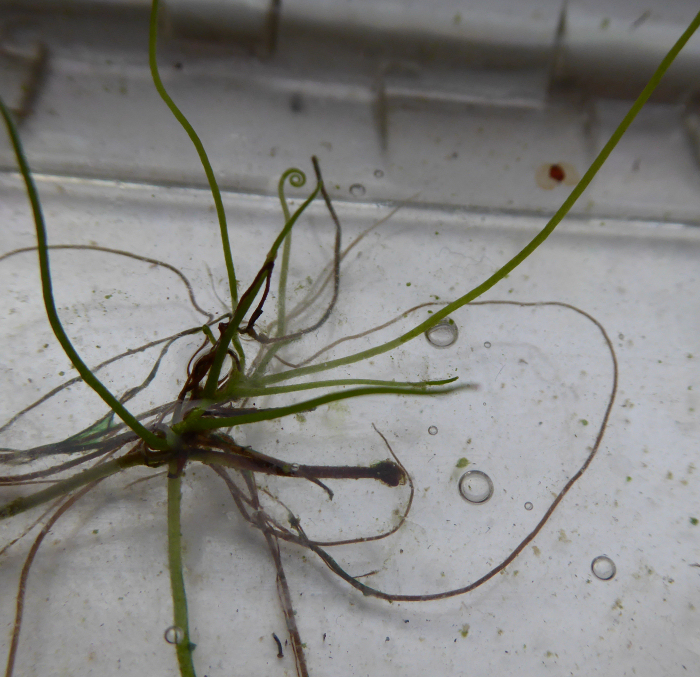
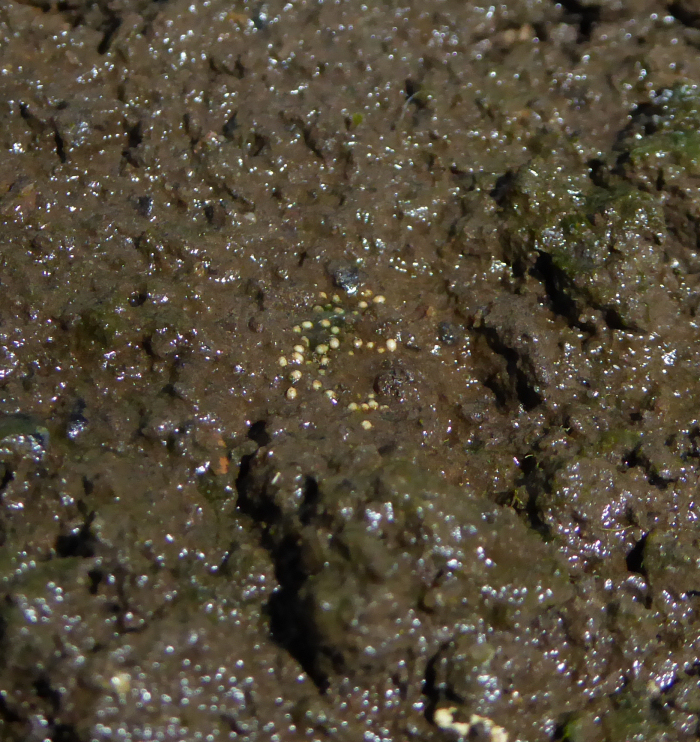
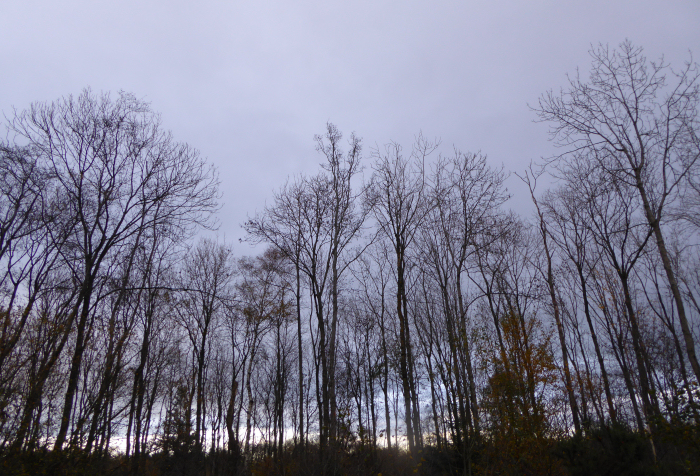
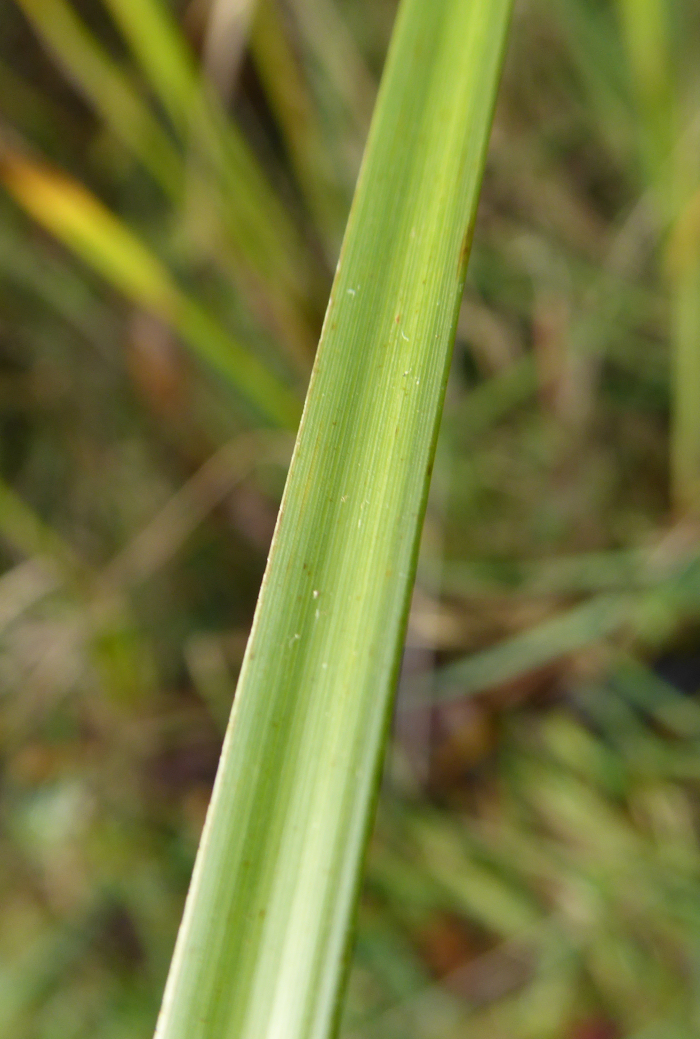
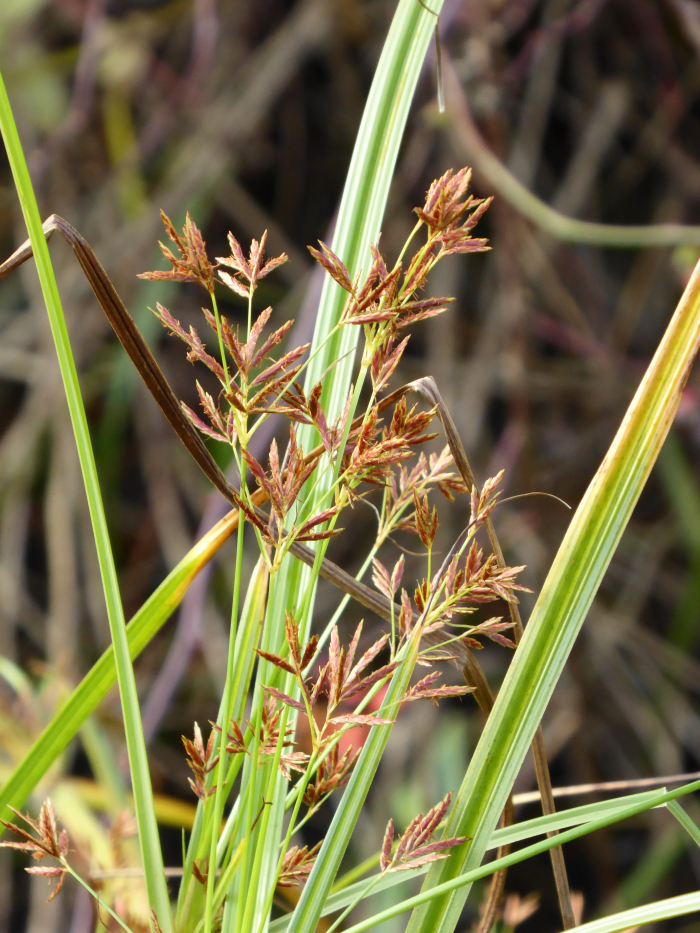



.JPG)
.JPG)
.JPG)




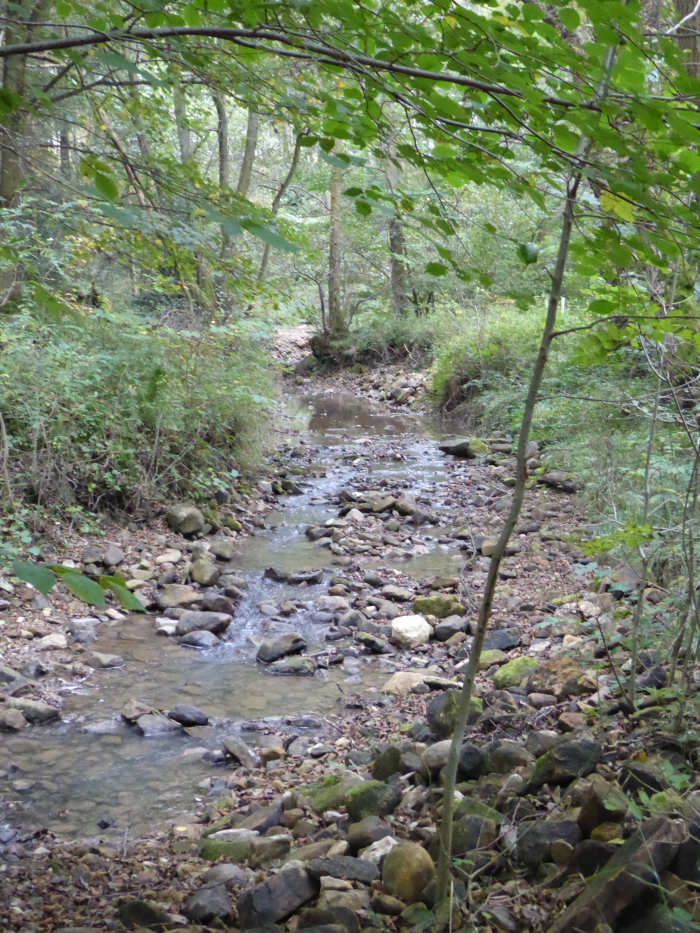

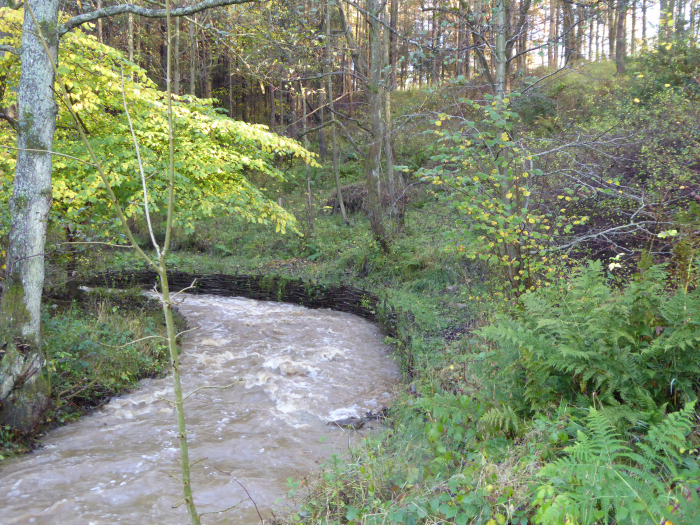
.JPG)

